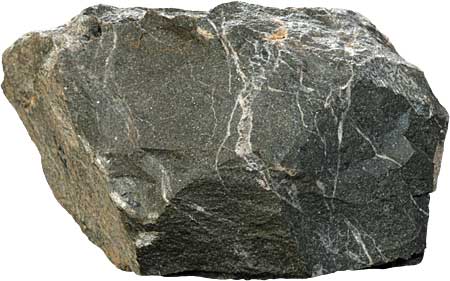Greywacke
Greywacke is a sandstone, but a special one.
Definition
Greywacke is a sandstone, but a special one. This sandstone consist of more than only quartz minerals. Greywacke consist of a variety of minerals due to its origin which lies close to erosion areas. The minerals present in greywacke are chlorite and biotite. Both are platy minerals and this can be seen in the rock type. Its name originated from the color it has.
Formation
Greywacke is formed in the deeper parts of the ocean where much fine muddy sand is present. This material was transported by rivers to the marine environment. The sediments have come from the erosion of exposed rock. Weather breaks off pieces of rock which are transported. Particles that are very fine can be transported further out to sea before they settle onto the sea floor. These are the sediments that form greywacke.
A special form of greywacke is the greywacke sandstone. This greywacke has more sand grains than a normal greywacke. This is caused by rapidly deposited particles near the parent rock. This can happen in deep ocean volcanic mountain ranges, where underwater landslides and turbidites transport the sediments with a high velocity to the ocean trench. It is also known as “dirty sandstone”. The volcanic rock fragments give the greywacke a greenish-gray color.[1]
References
Greywacke

| Group | Clastic sedimentary rock |
| Texture | An immature sandstone |
| Clasts | 0,06mm - 2mm |
| Hardness | Hard |
| Color | Grey to black with quartz veins |
| Minerals | Biotite, chlorite, quartz or feldspar |
| Touch | Gritty |
| Image | Greywacke |
|---|
